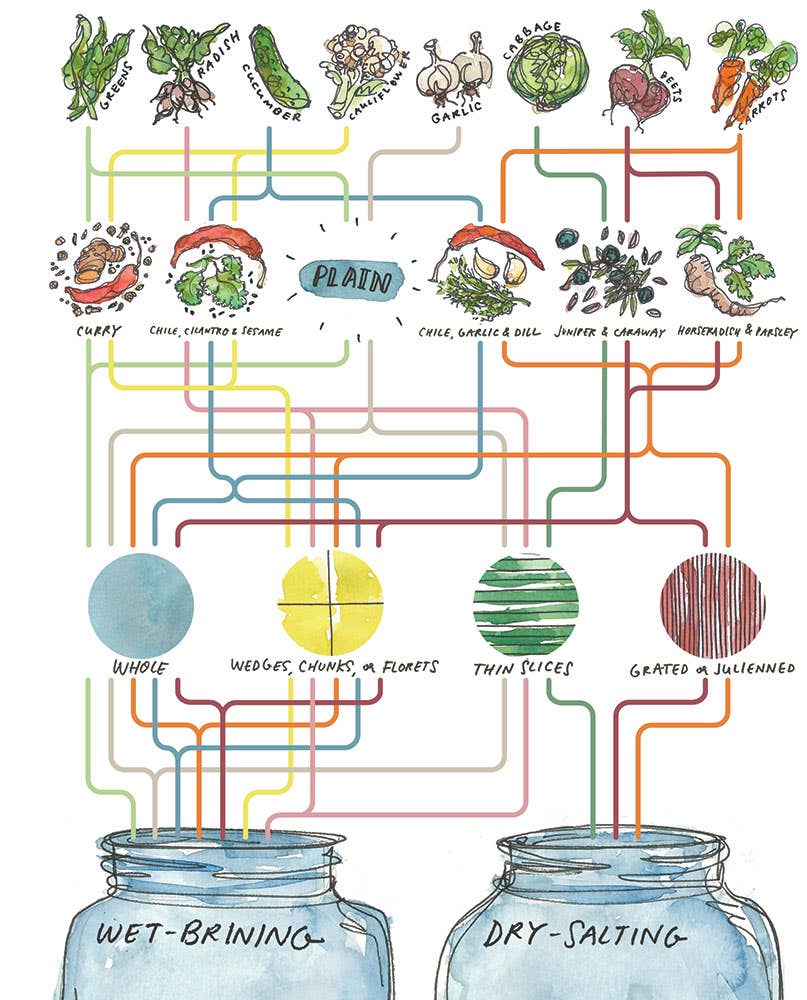
How to Ferment (Almost) Everything
A step-by-step guide to preserving whatever vegetables you happen to have on hand.
There's a reason chef Cortney Burns of "A Living Larder" has a basement filled wall to wall with jars. The art of fermenting vegetables is as simple as soaking them in salt and water, or—another technique she loves—rubbing them in salt so they form a natural brine. Spices, herbs, and other aromatics can take fermented vegetables to the next level. Here, a guide to fitting the produce to the brining method, and some flavor combinations to try.

Wet-Brining
Works with whole or cut hearty, raw peeled vegetables of all shapes and sizes (but smaller shapes and cuts will ferment more quickly). Dissolve 1 Tbsp. kosher salt per 1 cup water to form a brine. Jar vegetables with aromatics and add brine to cover. Seal and store in a dark, 60–68° area for 2–3 weeks, uncovering the jar every few days to release carbon dioxide. Eat, or refrigerate up to 1 year.
Dry-Salting
Works with shredded cabbage or some julienned roots. Massage 2½ lb. vegetables with 1 oz. kosher salt. Jar with aromatics. Let rest several hours. When liquid nears the top, weigh down vegetables to submerge. (If needed, add brine made of 1 Tbsp. kosher salt dissolved in 1 cup water.) Seal. Store in a dark, 60–68° area, uncovering every few days to release carbon dioxide. Eat after 1–2 months, or refrigerate up to 1 year.
Keep Reading
Continue to Next Story










